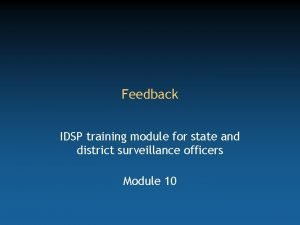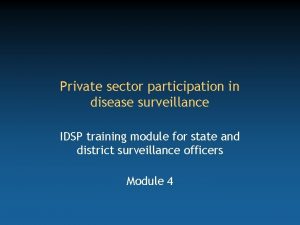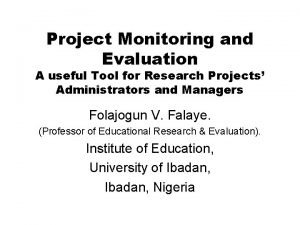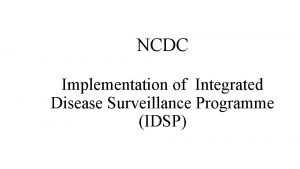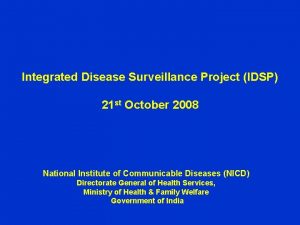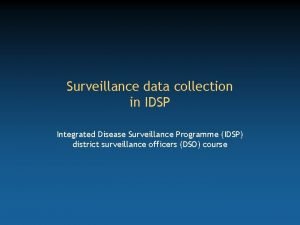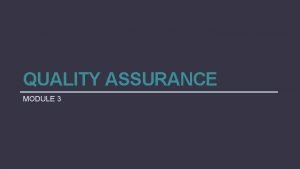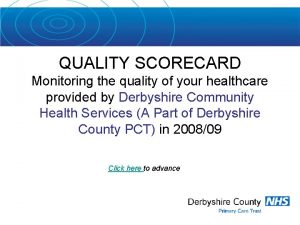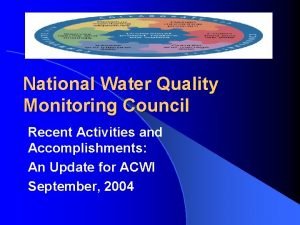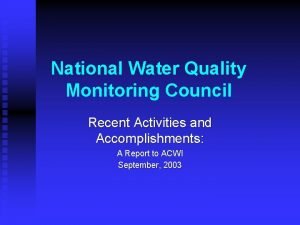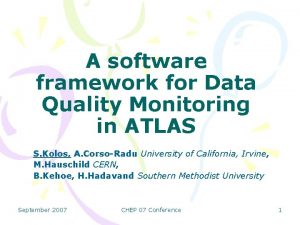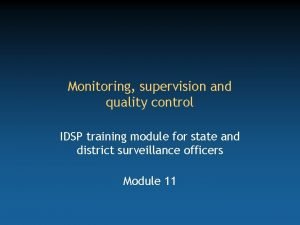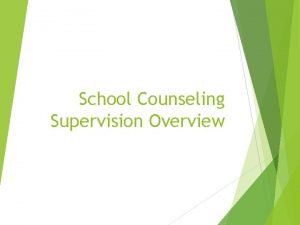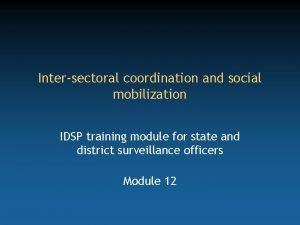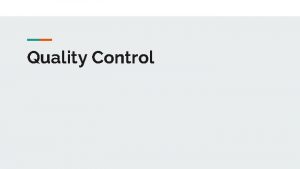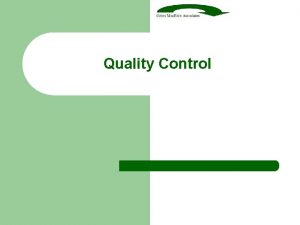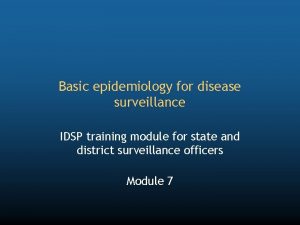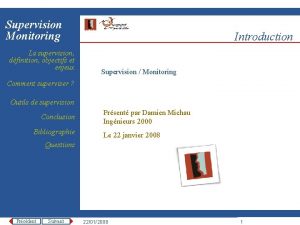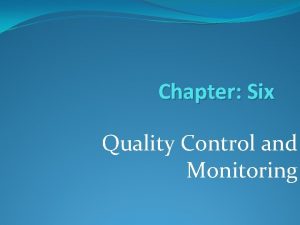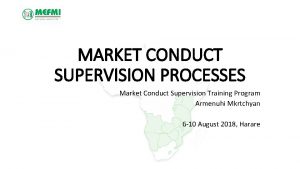Monitoring supervision and quality control IDSP training module





















- Slides: 21

Monitoring, supervision and quality control IDSP training module for state and district surveillance officers Module 11

Learning objectives • Categorize the components of surveillance activities at the district level for which district surveillance officer will be responsible • List the subcomponents of each of the above components for which district surveillance officer will undertake quality assurance in IDSP • Describe the role of state and central agencies for supervision and quality control in IDSP • Describe the objectives and steps in supervision of activities

Supervision and monitoring • Good supervision helps health staff to perform their best • Monitoring is also a vital component of any surveillance programme

Prerequisites for supervision • Job description § Should clearly describe the surveillance activity to be performed by each category of health staff • Resources § Required by supervisory team to perform this activity • Attitude § Supervision should not be a fault finding mission

Steps in supervision (1/2) • Prepare supervisory plan • Visit each reporting unit at least quarterly • Make a check list to help the team review most of the important activities • Review the previous supervisory visit report, so that supervisory team is apprised about field situation

Steps in supervision (2/2) • Activities during the visit § § Use checklist Observe Review records Conduct focus group discussions with staff • Provide feedback § Positive and negative • Recommend specific actions § Specific time frame

Monitoring • Monitor all surveillance activities using standard performance indicators • District surveillance office monitor indicators of reporting on a regular basis

Integrated disease surveillance programme activities to be monitored • • • Collection of data Compilation of data Analysis and interpretation Follow-up action Feedback

Weekly indicators of collection and compilation of data • Timeliness of reports • Completeness of reports § Number of reporting units providing regular/timely/complete reports § Number of sentinel private practitioners providing regular/timely/complete reports

Laboratory performance indicators • Proportion of laboratory specimens received in good condition • Proportion of laboratory specimens received with completed form • Proportion of results reported within seven days after receipt of specimen

Monthly/quarterly indicators for midterm review and correction of programme • Annual indicators • Completeness & Timeliness

Analysis and interpretation of data • Percentage of outbreaks detected by the system • Monthly and annually

Follow-up action indicators • Percentage of outbreaks detected within one incubation period • Percentage of outbreaks that have been investigated • Percentage of outbreaks investigated within 48 hours of detection

Feedback indicators • Number of monthly meetings at community health centre with surveillance staff, over last 6 months • Number of village health committee meetings attended by primary health centre staff every 3 months • Percentage and quality of newsletters published

Other indicators • Percentage of positions filled • Percentage of staff at each level trained • Percentage of districts with functional rapid response team • Percentage of districts with functional laboratories

Central agencies responsible for quality control • Central surveillance office • National Institute of Communicable Diseases • Indian Council of Medical Research

Other agencies identified by the Ministry of Health and Family Welfare for external evaluation • World Bank • World Health Organization • United States Centers for Diseases Control and prevention (CDC) • INDIACLEN

Potential activities to improve the quality of surveillance (1/2) • Ensure that necessary resources and incentives identified in the programme have been provided to the functionaries • Identify the right person for the right task and change work responsibility to suit the individual • Conduct site visits to identify and supervise the activities of the functionaries • Identify weakness and help with additional training of personnel on site as required

Potential activities to improve the quality of surveillance (2/2) • Keep personnel contact to understand problems associated with functionary • Discuss persisting problems to identify solution at the district surveillance monthly meetings and take appropriate actions specified by the group • Give written instructions on the solutions suggested by the group to the functionary

Points to remember (1/2) • • • Monitoring and evaluation is a continuous activity carried out at different levels by different persons as part of the quality assurance The main objective of supervision and monitoring and evaluation is to encourage and improve the quality of work associated with surveillance and not to find fault with the individual and system Supervision, monitoring and feed back maintain quality of surveillance activities

Points to remember (2/2) • • • Identify right person for the right task Provide training, resources and incentives Supervision and monitoring in private sector units has to be done with greater sensitiveness and with understanding the partnership role of voluntary agencies and communities
 Idsp training module
Idsp training module Idsp training
Idsp training Differentiate monitoring from evaluation
Differentiate monitoring from evaluation Ihip idsp
Ihip idsp Www.idsp.nic.in data entry
Www.idsp.nic.in data entry Optiviewusa
Optiviewusa Idsp data entry
Idsp data entry Quality assurance vs quality control
Quality assurance vs quality control Quality control basics
Quality control basics Quality assurance module
Quality assurance module Module de supervision
Module de supervision Project quality management pmp
Project quality management pmp Pmp gold plating
Pmp gold plating Perbedaan pengendalian pengawasan dan evaluasi
Perbedaan pengendalian pengawasan dan evaluasi Margaret morrell supervision training
Margaret morrell supervision training Wonnacott discrepancy matrix
Wonnacott discrepancy matrix C device module module 1
C device module module 1 Quality monitoring scorecard
Quality monitoring scorecard Quality monitoring scorecard
Quality monitoring scorecard National water quality monitoring council
National water quality monitoring council National water quality monitoring council
National water quality monitoring council Data quality monitoring framework
Data quality monitoring framework
